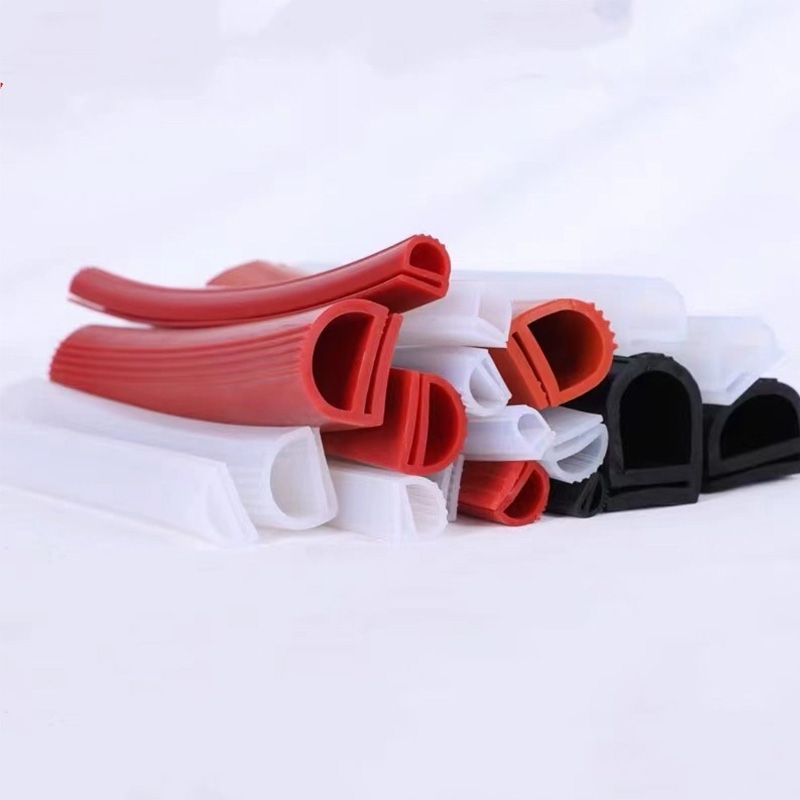How to Weatherstrip a Door
Weatherstripping, or attaching seals around an entryway door to fill in the gaps, is essential to maintaining the energy efficiency of your home in the winter (keeping the chilly air out) and in the summer (keeping the air conditioning in). Consider that even a tiny 1/8-inch gap around a typical entryway door is equivalent to having a 5 ½-inch-diameter hole on an outside wall. Closing that gap can go a long way in lowering your energy bill.
A well-sealed door requires two components: weatherstripping the sides and top to fill in the space between the door and the jamb, and adding a sweep to the bottom to fill in the space between the door and the threshold. You can find an array of metal, foam, felt, and plastic products on the market for this purpose, but we recommend a tubular silicone weatherstripping that fits against the doorstop and a twin-fin silicone sweep that fits beneath the door. Silicone is the ideal weatherstripping material because it’s durable, soft, and has no compression memory—it remains tight as the door swells and shrinks with the temperature.
Tools & Materials
Here’s how to weatherstrip your door to keep your home free of drafts and air leaks.
Step 1
Measure the gap

If there’s old, worn weatherstripping around the doorframe, use a flat pry bar to remove it. Then, with the door closed, measure the gap between the door and jamb and the door and stop. Take measurements along both side jambs and the head jamb, then choose weatherstripping for each side that’s big enough to fill the largest gap along its run.
Step 2
Cut a groove

Tap out the hinge pins and remove the door from the opening. Pull a paint scraper along the stop and jamb to make sure both surfaces are smooth. Fit the grooving tool’s V-shaped base into the corner formed by the jamb and the stop, with the bit pointing up.
E type sealing strip
Turn on the motor and push the tool up to the head jamb. This creates a slot that’s 1/8 inch wide and 3/16 inch deep. At the top, turn off the motor and remove the bit from the slot. Reinsert it at the starting point, this time with the bit pointing down. (Retracing your path in the slot can widen it too much to grip the weatherstripping.) A steady push to the bottom of the jamb with the motor revving finishes the slot on that side. Repeat the process on the opposite side jamb and the head jamb.
Step 3
Insert the weatherstripping

Take one end of the weatherstripping and push its barbed tongue into one end of the slot. Be careful not to stretch the weatherstripping or it’ll return to its original length and leave gaps. A couple of inches from the slot’s opposite end, gauge the proper length and cut the strip with scissors. It’s not necessary to miter the ends where they meet at the head jamb; a butt joint seals best.
Drive the weatherstripping into its slot with a spline roller. Check the installation by shutting the door from the outside and looking for gaps.
Step 4
Rout the dado

To seal the door bottom, place the door on sawhorses and use a square to mark out a 5/8-inch-wide dado (or trench) centered on the door’s bottom edge. Set the router’s guide so a ½-inch bit will cut next to the top mark when the guide rests on the door’s top face.
On the first pass, move the router from left to right. On the second pass, let the guide ride on the door’s opposite side, and move the router from right to left. Make multiple passes to reach a full depth of 1⅛ inch.
Step 5
Paint the wood and attach the channel

Coat the exposed wood in the dado with primer and paint.
Cut the sweep’s two aluminum channels 1/8-inch shy of the width of the door to allow for end caps to be installed later. To make sure the cut is clean, clamp the channels in a miter box and use a hacksaw with a waxed blade. Insert one channel into the dado, center it end to end, and screw it in place.
Step 6
Install the sweep

Fit the black silicone sweep into the free channel and slide the glides into the channel in the dado. Carefully rehang the door.
To seal the ends of the dado, snap plastic caps into the ends of the channel and stick squares of adhesive-backed pile against the bottom of the jambs.
Step 7
Adjust the glides

No light should show between the sweep and the threshold when the door is closed. To adjust the fit of the glides, open the door, remove the end cap from the latch side, and slide out the sweep. Turning the glides clockwise raises the sweep; counter-clockwise lowers it. Then slide the glides back into the attached channel.
Share
-
The Best Lubricants for Aluminum Roller GuidesNewsJul.23,2025
-
Slitting Machine Applications in the Packaging IndustryNewsJul.23,2025
-
Rolling Roller Balancing Techniques for Smooth OperationNewsJul.23,2025
-
How To Optimize An EV Battery Assembly LineNewsJul.23,2025
-
Energy Efficiency in Modern Battery Formation EquipmentNewsJul.23,2025
-
Automation Trends in Pouch Cell Assembly EquipmentNewsJul.23,2025








